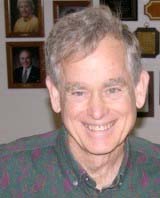Meditation Techniques and Hatha Yoga Benefits
In meditation, one practices techniques to relax, withdraw attention from the world, and concentrate on God in stillness and silence within.

By George Johnston
In meditation, one practices techniques to relax, withdraw attention from the world, and concentrate on God in stillness and silence within, but many people have tensions and health problems that distract and limit them when they try to do this. However, regular practice of traditional hatha yoga poses can relax tensions, energize your whole being and improve your health, helping you withdraw your attention from outer sensations and wandering thoughts when you practice meditation techniques to enter the inner silence.
To meditate, begin by sitting on a chair or cushion with your spine erect and your eyes closed, your hands resting, palms upturned, on your thighs. Concentrate on the breath, breathing slowly and deeply through the nose. In cadence with your breathing, mentally say to yourself, “I am not the body” [in breath], “not even mortal mind” [out breath], “I am eternal Spirit” [in breath], “I am love divine” [out breath]. Practice this for a few minutes.
Then continue to breathe slowly and deeply with your eyes closed, but with each exhalation, sigh out the breath through your mouth making a long, drawn-out sound of “aum.” This humming sound does not need to be loud. As you inhale, breathe through the nose and concentrate on the breath, and as you exhale, make the sound and concentrate on it. Feel it vibrating within. Do this for at least five minutes; then mentally chant “aum” and, as you meditate on this sacred syllable, listen for a similar spiritual sound. Keep your eyes closed and listen with full attention. The spoken sound is an approximation of the spiritual sound. If you can hear the spiritual sound, meditate on it, and it will expand your awareness.
Gently lift your gaze with your eyes still closed and concentrate on the forehead just above the midpoint between the eyebrows. Mentally observe the flow of breath without controlling it in any way. It may slow down of its own accord if you become deeply relaxed. As you concentrate on the breath and on the forehead with your eyes closed and turned upward, you may wish to meditate with love on a divine being or a saint, visualizing them and/or repeating their name over and over. You can also meditate on a spiritual thought or “aum.” If you see divine light while gazing upward, focus on this light.
In a quiet place where you will not be disturbed, try to meditate every day, at first for at least ten minutes and as you gain self-mastery for much longer. If your mind wanders and you begin to think of material concerns or desires, keep your eyes uplifted and, as you exhale, make the humming sound and concentrate on it. If you wish, pray or talk with God. Try to go deep. In deep silence and stillness, one may experience divine peace, love, light, wisdom and bliss. Even if you do not go as deep as you wish, meditate and seek God to the best of your ability and you will become more peaceful, more intuitive and perceptive, happier, and more aware of God’s presence in your life.
The postures of hatha yoga, the path of physical discipline, are very helpful in achieving optimal well-being. Because they dispel restlessness, tension, and fatigue, they allow the organism to right itself, to restore order and balance among its various functions.
Thus, one who learns to do the postures with concentration and breath control can enjoy deep relaxation, open up new channels of energy from within, and harmonize the functions of the involuntary organs. Better sleep and more normal blood pressure, digestion, and elimination are just a few of the physical benefits gained by practice of hatha yoga postures.
In addition, the mind is cleared of obstacles: worry, fear, inattention, complexes, frustrations, lack of self-confidence, and so on. The mind heals itself when given the opportunity, and there is no better approach to inner harmony than the practice of yoga.
Success in hatha yoga does not depend on learning to perform a great number of postures but on deepening your concentration and perfecting your technique. Practice each posture carefully, with full concentration and awareness of its inner content, and you will begin to awaken in a new way. Your mind will become clearer, your body healthier, and your spirit more peaceful.
Perform each movement slowly. If a posture causes discomfort in the head, chest, or abdomen, or pain in any part of the body, discontinue practicing it. Relax after each posture for about as long as you held the posture. This allows the heart and lungs to rest, the mind to become calm.
Set up a time to practice, in a quiet place where you can concentrate, and practice as often as you can. The muscles and ligaments must be stretched very gradually, a little more each day over a period of several weeks, and should never be forced. When your body becomes limber, you will be able to hold each posture with ease.
Individual restrictions due to age, high blood pressure, arthritis, hernia, surgery, or pregnancy should be discussed with a physician.
For additional techniques to relax tensions, improve health, calm the mind, and in deep meditation, find peace and happiness within, see George Johnston’s Ezine article “Alternate Nostril and Bhramari Breathing”.
George graduated from Yale University in 1956, started to practice meditation and yoga postures in 1962, and has taught the principles and techniques of yoga and led meditations for over 53 years. He writes articles based on the teachings of great masters, including many received from Jesus in our time by people who were able to communicate with Him.
George’s wife, Mary Ann, has been able to see and talk with Jesus since she was a child and has written three books about living a God-centered, spiritual life, which contain profound truths and guidance from Him and other masters.
To learn more about the authors and read free chapters from Mary Ann’s books, please visit:
https://ezinearticles.com/expert/George_Johnston/339141
